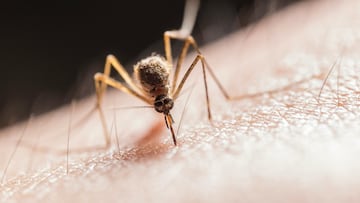What is the difference between West Nile virus and Eastern Equine Encephalitis (EEE)?
EEE cases are leading to public health advisories in Massachusetts. How does this disease compare to West Nile virus?


Residents of Oxford, Massachusetts, are under an advisory 6 pm curfew after an eighty-year-old resident of the country was diagnosed with Eastern Equine Encephalitis (EEE). As far as mosquito-born illnesses that can appear in the United States, EEE is one of the most lethal, with around thirty percent of those infected dying as a result of the virus. Though some have cast the public health advisory as a COVID-19-style stay-at-home order, it is voluntary with the city recommending that those planning outdoor activities have them wrap up before 6:00 pm. This time was selected because mosquitos are most likely to bite their victims at dawn and dusk. On October 1, 2024, the advisory will be adjusted for activities to end at 5:00 pm, and it will stay that way “until the first hard frost.”
After a second case was identified in the area, officials stressed the importance of the public health order to wear mosquito spray and spray one’s home to ensure that no infected mosquitoes are laying eggs around the property.
What are the symptoms of Eastern Equine Encephalitis (EEE)?
One of the most dangerous aspects of EEE is that the symptoms often don’t appear until anywhere between four and ten days after being infected. However, unlike other mosquito-born illnesses, humans and horses are considered “dead-end” hosts,” reports the US Centers for Disease Control and Prevention (CDC), meaning that a mosquito that bites an infected person cannot transmit the disease to another human. Instead, spread occurs between birds and mosquitos; in some cases, an infected mosquito can pass along the virus if they bite a human.
EEE is a febrile illness, meaning that the symptoms include “fever, chills, body aches, and joint pain,” according to the CDC. This phase of the illness can last between one and two weeks, and “when there is no central nervous system involvement,” the disease is far less dangerous. However, the disease can cause meningitis or encephalitis, and these conditions make the virus much more lethal. These secondary symptoms appear at different times after one has been infected, depending on the age of the patient:
- fever,
- headache,
- vomiting,
- diarrhea,
- seizures,
- behavioral changes,
- drowsiness, and
- coma
For adults and older children, the neurological symptoms will likely appear for several days after becoming infected, whereas infants are likely to show symptoms much more quickly.
What are the symptoms of West Nile Virus?
Related stories
If you are bitten by a mosquito, these are the symptoms you should be looking out for:
- headache
- body aches
- joint pains
- vomiting
- diarrhea
- rash.
Unlike EEE, eight out of ten people infected with West Nile virus will not show any symptoms, making it far less lethal overall. However, for those who do develop symptoms, their infection can be very severe, and around 1 in 150 people with Wesr Nile will develop the most severe presentation of the disease, where the central nervous system is attacked. This more serious condition can lead to encephalitis or meningitis, which describes inflammation of the brain or “the membranes that surround the brain and spinal cord.” Ten percent of those who reach this level of illness die as a result of their infection, according to the CDC.
Complete your personal details to comment